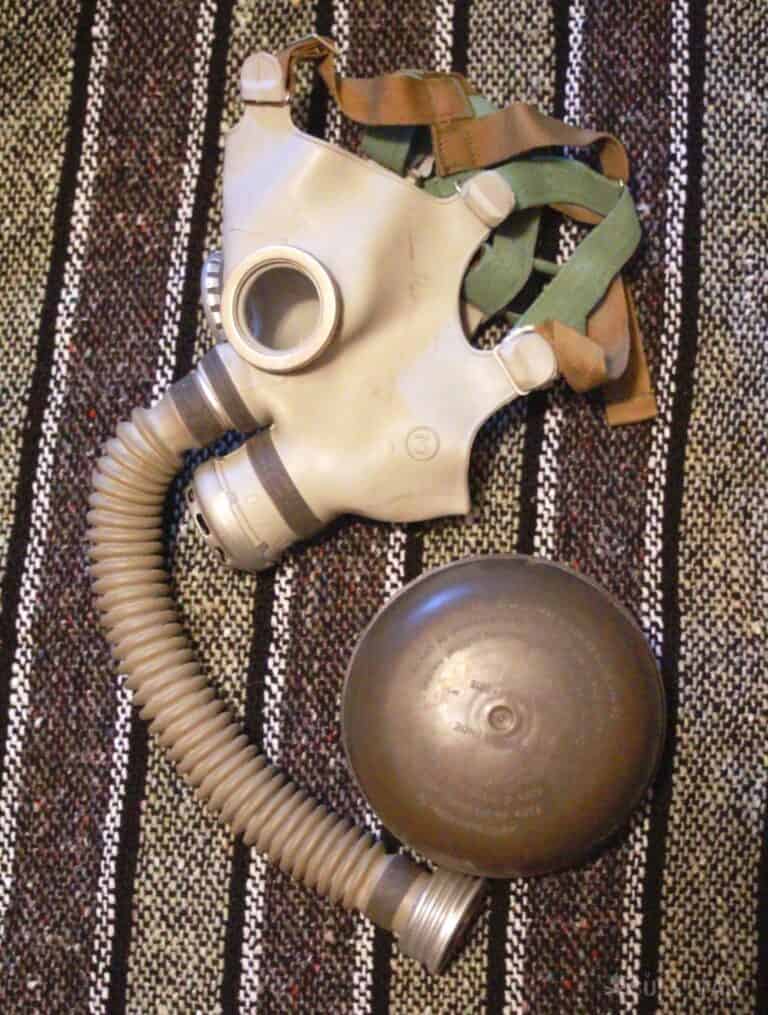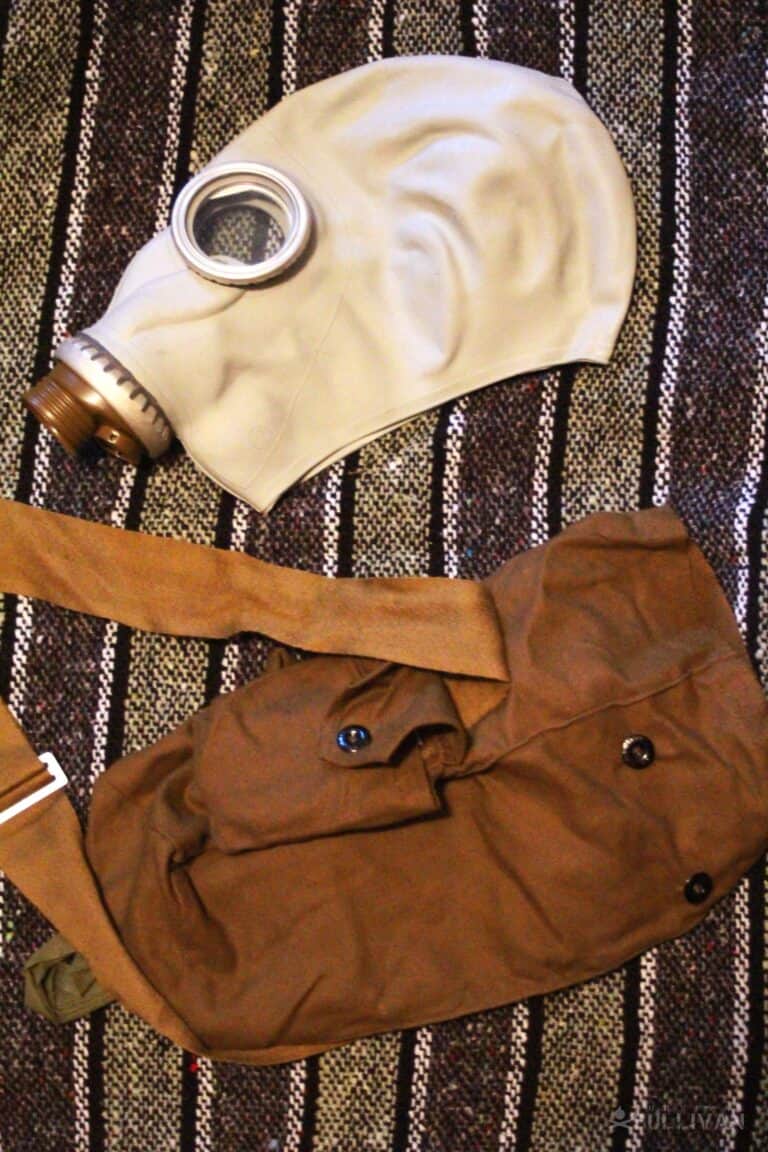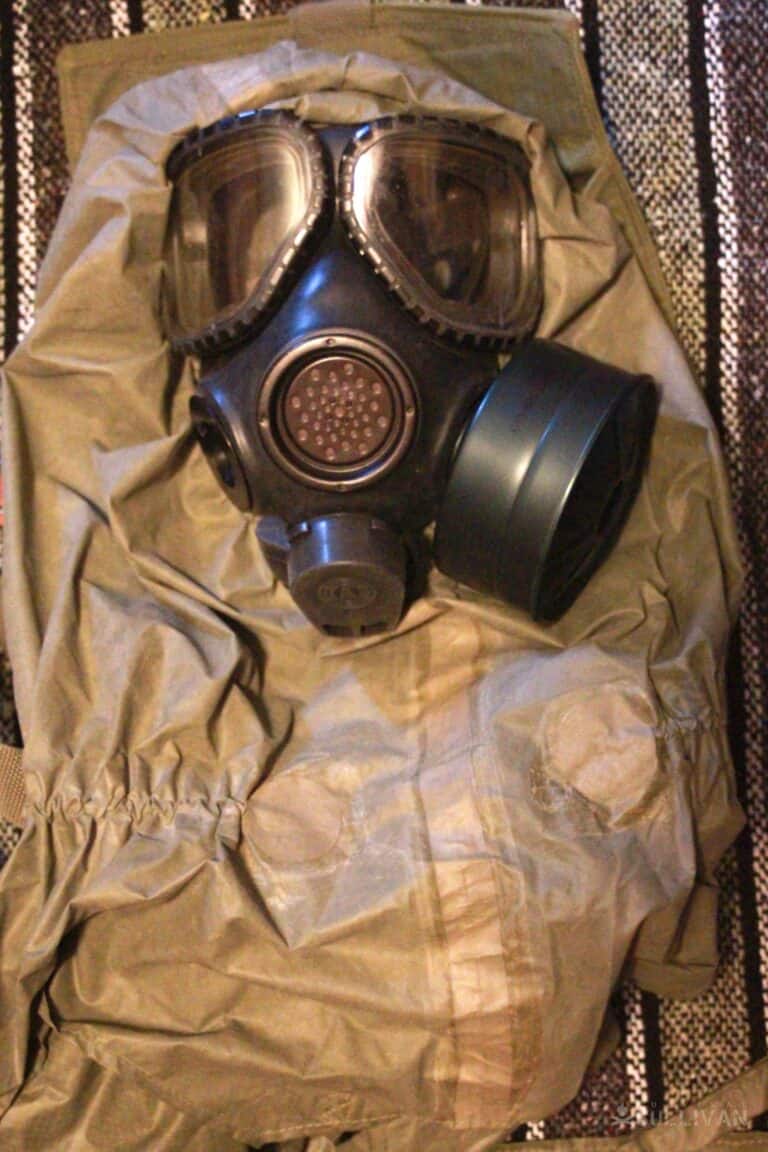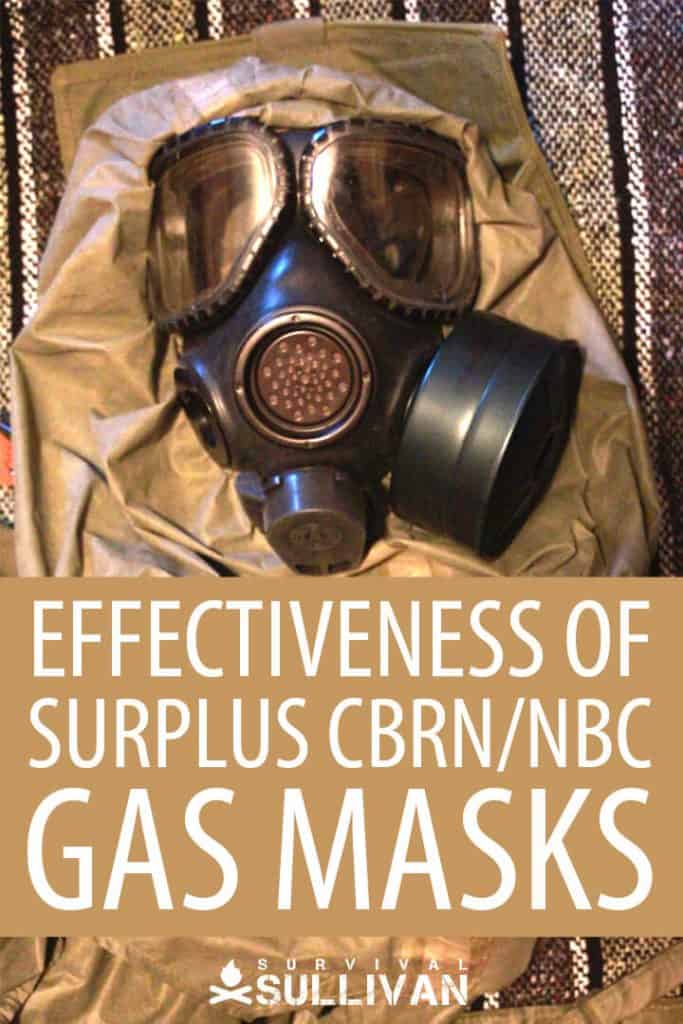There are many gross misconceptions concerning the effectiveness/ineffectiveness of surplus “gas masks” currently on the marked. The term gas mask is in itself a misnomer.
What most people call a gas mask is actually a CBRN (formerly known as NBC) Protective Mask or Pro Mask in military terms. CBRN stands for Chemical, Biological, Radiological and Nuclear.

In light of the current emerging threat of multiple maladies such as Ebola, Zika and the ever present Swine/Bird flues, I feel it is important to discuss certain aspects of personal protection; what is effective, what is not effective and the precautions the average person can take.
Before I delve into the meat of this topic it is important to get a bit of science out of the way.
What are viruses such as Ebola or Zika? Yes, we know a virus is a little “bug” that does horrible things to people, but what is it really? Ebola is a member of the Filoviridae family of viruses and is a single stranded RNA type.
The size (this is the important part to remember) is a length of approximately 970nm and a diameter of approximately 80nm. Zika, while obviously different is very similar in size; again, size is the important factor here.
With the brief science out of the way it is time to discuss how this matters in terms of CBRN protective equipment. Specifically, surplus gas masks currently on the market for cheap; even more specifically, the cheapest of the cheap, the Russian GP-5 mask.
Are they effective? All gas masks whether new or surplus, military or civilian are comprised of 3 basic elements; rubber, metal and plastic.
The Russian GP-5 is no different in that respect. There are many many misconceptions that abound on the Internet that simply because it is Russian or Eastern Bloc design and made many years ago it is of an inferior quality and offers no protection whatsoever. You will see many retailers touting this information.
They push these falsities in an attempt to scare you and buy their $200 plus dollar protective masks because, simply put, what business in the Capitalist economy can possibly compete with an effective mask that only costs four bucks.
It all comes down to education and reality versus Internet lore, and a small dose of science.
Now for the education. If you were to take a brand new gas mask and attach an old used filter then its effectiveness/protectiveness would most likely be near zero.
If you had an old used, undamaged gas mask and attached a brand new MSA certified filter then your odds of protection would be greatly increased.
It all comes down to filters. You can spend $3.99 on a new-ish Russian GP-5, and that would not be a problem, just make sure to get a new manufactured filter to go with it.
Do not expect the old Com-Bloc filter to provide any protection. In some cases these old filters themselves can be harmful as a few of them are lined in asbestos.
The filters are where you will be spending your money. Good, current issue filters go for $40.00 and up from certified sellers. Do not skimp on this, this is what is important.
Reality time. A study done on the old Russian GP-5s showed they were effective for up to 24 hours in a contaminated environment. The average filter will last anywhere from eight hours to only 30 minutes in a highly contaminated environment.
While the mask itself may last longer, you should consider it a “One and Done” type situation; filter is used up and mask is also contaminated, throw them both away.
Most of these GP-5s and similar protective masks are extremely inexpensive, so tossing it after use should not irk your prepper sensibilities on waste all that much.
Bear in mind that no type of protective mask is designed to allow the wearer to hang around in a contaminated area indefinitely.
They are designed to allow the wearer to don the mask and evacuate the area as soon as possible. In this regard the GP-5 with a new filter will work for this purpose, as has been proven.
How does this information help and what does all of this have to do with nasty bugs and viruses such as Ebola, Zika et al?

Modern CBRN filters are capable of filtering out common Retroviruses which have and average size of 80nm all around, which is well within the average size of Ebola, and would therefore be effective against aerial transmission.
But, you say, “Ebola is not an airborne virus!” Of course not! And viruses have never ever mutated or evolved have they?
Sarcasm aside, the chances of previously host bound viruses such as Ebola becoming airborne is high (if it hasn’t happened already), and any protective mask will offer the wearer some degree of direct skin contact protection as well.
However one should also consider having some sort of allover protective coverall to be thoroughly protected.
Please note that nothing is ever 100% effective; people still die in car wrecks even though they wore their seatbelts. People still contract lung cancer even though they have never smoked.
People still get pregnant even though their partners wore a condom. I will say it again, Nothing is ever 100%! Taking risks is only risky when you are ill-informed.
Protective masks/gas masks also have many uses outside of virus and bacteriological protection as the name, CBRN, itself implies in its acronym: Chemical, Biological, Radiological and Nuclear (formerly NBC, Nuclear, Biological and Chemical).
To a prepper, a protective mask can be an indispensable item for a multitude of tasks not just the “worst case scenarios.”
Allow me to give you a personal, real-world example of alternate uses. You have finally managed to purchase your dream homestead but the house that is on the land is old and is in need of much TLC. The house itself is sturdy and the foundation is good, but the interior is another matter.
When you enter the house you realize that it is covered in inches of dust, bug carcasses and fecal matter from an untold number of various rodents.
Any one of these things is enough to send an allergen sensitive person into a sneezing fit. All combined it can actually be very hazardous to the health of even the most robust immune system.
Both bugs and rodents are great carriers of disease and when this is mixed with dust that can be easily stirred up under-foot, you will then have a very health hazardous cocktail waiting to be breathed in.
This is where your protective mask comes in outside of a SHTF scenario. New modern CBRN filters can easily filter out these potentially harmful entities.
The next case for having a protective mask in your prepper outfit is for certain aspects of prepping itself, namely, water preservation and sanitation. Chlorine has been used for countless years to sanitize water, both for drinking and general use.
Chlorine, whether in liquid or powder form is very hazardous and noxious if breathed in. Chlorine gas was one of the first chemical weapons used in World War I.
It would behoove any prepper, who handles chlorine for water sanitation to also utilize a protective mask when working with large quantities. Once again, modern protective mask filters can readily filter out the harmful lung injuring compounds in chlorine.
It is worth noting at this point that in your search for your protective mask/mask preps you will most likely run across three variants of surplus mask.
The first kind is what is referred to as “NATO Standard” which is the regular canister style mask with 40mm attachment threads. These are the most common filter size type.
The next style is the 60mm canister thread type. Avoid these. The 60mm threads are non-standard and new made filters are almost nonexistent and the surplus ones are of questionable quality regardless if it is sealed or not.
The surplus brands for these include Finnish, older Canadian, Serbian and Yugoslavian. There may be others but these are the most common encountered.
While there is an adapter ring that is produced to allow for the use of standard 40mm to 60mm filters, this should still be avoided if at all possible; it is merely a plastic ring and you are now adding one more part to the protection equation that could fail.
Keep it simple. The last type of protective mask is the US M17 style and various eastern-bloc clones such as the Czech model. All that can be said about these are, Avoid! Avoid! Avoid! This old style of mask utilizes the filters on the inside of the mask near the cheeks (often called cheek filters).
How would you like to take the chance of removing your mask in a contaminated environment to change the filters? Yeah, me neither.
Not to mention the fact that these types of filters are only designed to filter out some very basic chemical/aerosol type contaminants, and yet again, new made filters are nonexistent.
When prepping always stay with common, readily available and proven items, regardless of what those items might be.

It is important to quickly discuss properly storing your protective mask.
It goes without saying that both mask and filter must be stored “high and dry.”
A wet or even damp filter will break down quickly and its overall effectiveness will be reduced exponentially within just a few hours.
While water will not, in and of itself, affect the mask since it is rubber by and large, if left for long periods of time in a wet state it will begin to grow mold and bacteria.
When cleaning a protective mask use only warm water and a small amount of dish soap. After cleaning dry it immediately and thoroughly. The filters themselves, when bought new, should come in a sealed canister that is usually metal or plastic and can be opened when needed.
For the most part the filter will need no other maintenance when left sealed save for proper dry storage until needed.
In closing, when it comes to most surplus gas masks, they will most likely be an effective protection provided they are not broken, dry rotted, seal properly and have new filters.
Get what you can afford but don’t gamble on old filters. Old and or expired filters are fine for practice use, which brings me to the final point. Make sure you know and fully understand how to properly use protective equipment.
Do not buy it, throw it in a closet and magically think you will know how to use it come “Zero Hour”.
Practice, Practice, Practice!


My dad was military. My grandfather was a cop. They served their country well. But I don’t like taking orders. I’m taking matters into my own hands so I’m not just preparing, I’m going to a friggin’ war to provide you the best of the best survival and preparedness content out there.

The problem I have found in the UK is the reaction of civilians when you suit up.
They usually FREAK!
Add the typical low IQ, or those who have never served a day, type LEO, and all they keep yelling at you is “take off the mask”.
Having said that, if I am wearing a high vis jacket, the other problem is both civilians and LEO’s take you as a source of information or, worse still, assistance if you mask up.
When all I want to do is clear from the area as fast as I can.
As a result I now travel low key, grey man style and only carry around a small EDC with a couple of FFP3 / P100 / N100 rated masks PLUS a hooded storm cape, a pair of fold flat googles to cover my glasses, and two layers of gloves. Nitrile and dipped rubber working style.
Pretty poor level of protection?
Probably but speed is my aim and distance my goal.